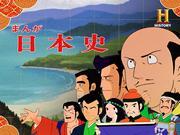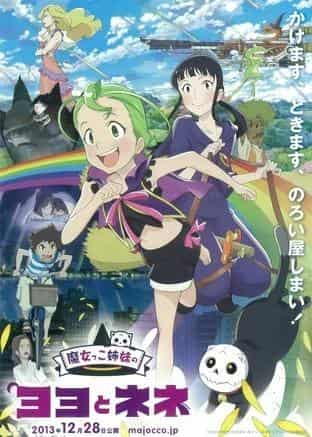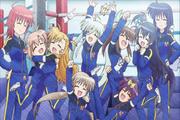A thorough evaluation of the appeal and educational value of "Manga Japanese History"!

"Manga Japanese History": A time machine for enjoying historyManga Nihonshi, which aired on Nippon Television from 1983 to 1984, is an anime series that aimed to make learning about Japanese history fun for a wide range of people, from children to adults. The series was produced based on the educational manga Shonen Shojo Nihon no Rekishi (Boys and Girls' History of Japan), and each episode focuses on an important historical event or person, introducing Japanese history in a light-hearted tone that includes humor. Although it is a long-running series with a total of 52 episodes, there are many ingenious ideas that keep the viewers from getting bored. Broadcast information"Manga Nihonshi" was broadcast every Sunday from 10:30 to 11:00 from April 3, 1983 to April 8, 1984. It was broadcast by Nippon Television and consisted of 52 episodes, each 30 minutes long. It was produced by Nippon Television and Tsuchida Productions and directed by Kondo Eisuke. story"Manga Nihonshi" depicts the history of Japan in chronological order. Each issue covers approximately 2,000 years of history, from the birth of the Japanese archipelago to the Meiji Restoration, focusing on a different historical figure or event. The story follows a boy and girl from the present who travel to the past in a time machine and experience historical scenes. Gags are occasionally inserted to make the serious historical topics feel light-hearted. CommentaryThis anime is based on the educational manga "Boys and Girls' History of Japan" and is designed to allow viewers to learn about Japanese history while having fun. At the end of the show, there is a detailed commentary by a female university student, allowing viewers to gain a deeper understanding of history. In addition, the same character, a boy, appears in each era in a time-appropriate appearance, and by depicting Japanese history through the eyes of ordinary people in an easy-to-understand way, viewers will feel a sense of familiarity with the show. castThe main cast is as follows:
Main StaffThe main staff involved in the production are as follows:
Main CharactersThe main characters are as follows:
subtitleThe subtitles for each episode are as follows:
Theme songs and musicThe opening and ending themes are as follows:
Ratings and Recommendations"Manga Nihonshi" is an excellent piece of entertainment for learning history. It is especially valuable in getting children interested in history. The light-hearted tone, interspersed with humor, makes the heavy historical topics fun and keeps viewers from getting bored. Also, the commentary section by a female university student at the end of each episode helps viewers to gain a deeper understanding of history. This anime offers viewers a new perspective by depicting history from the perspective of ordinary people, which is difficult to convey in history textbooks. For example, it not only depicts the exploits of warlords in the Sengoku period, but also the lives and culture of ordinary people, encouraging a multifaceted understanding of history. In addition, the format of using a time machine to let modern boys and girls experience historical events makes viewers feel more familiar with history. In addition, this anime depicts Japanese history in chronological order, making it easier for viewers to grasp the big picture. Each episode focuses on a different historical event or person, allowing viewers to naturally understand the flow of Japanese history. This is an experience that viewers cannot get by simply reading a history textbook, and is extremely beneficial for viewers. "Manga Nihonshi" is an excellent anime series that allows a wide range of people, from children to adults, to learn about Japanese history in a fun way. I highly recommend it to anyone who is interested in history, wants to learn about history, or wants to enjoy it as entertainment. Please feel the depth and interest of Japanese history through this anime. |
<<: Review of "Meme Dream Journey": A journey into a world of unique adventures and laughter
>>: Kinnikuman: The appeal and reviews of the first series
Recommend
Mysterious man Joe appears in "Breaking Bad" movie 30-second Chinese trailer released
Today (September 29), Netflix released another tr...
The lines in the domestic web drama "Beginning" say: P5 is the best in the world, Zelda is the best
Recently, the official Weibo account of the Chine...
The makeup photos of the main characters of the Japanese drama "Movie Girl" by Katsura Masakazu are released. The goddess Nogizaka is beautiful and charming
The second installment of the latest live-action ...
"Hyperdimension Neptune" Black Heart dress figure curves and attractive postures
The female characters in "Hyperdimension Nep...
"Terminator: Dark Fate" new Chinese poster released, old and new Terminators unveiled
Recently, the new Chinese poster of the movie &qu...
Uncharted movie scores 6.2 on Douban: bad casting, many game adaptation elements
The game-adapted movie "Uncharted" was ...
Osomatsu-san Season 3: A thorough analysis of the new developments and character growth that exceed expectations
Appeal and evaluation of the third season of &quo...
The animated theatrical version of "You Are My Destiny" adds new voice actors: Hayami Saori and Ogura Yui!
Today (August 13), the official youth fantasy ani...
Denzel Washington's revenge action film "The Equalizer 3" first released trailer
Today (April 26), the first trailer of the reveng...
Warner Bros. says strike caused $500 million in losses, had previously said it saved money
The strike by the Writers Guild of America and th...
Sony Pictures CEO: It would be a mistake to release Tenet now. We won't do that.
After Warner Bros.' "Tenet" was rel...
The producer of "Battle of Two Cities" wants to adapt Takehiko Inoue's "Vagabond"
Recently, Pascal Charu, founder of Fortiche Studi...
Author Kindaichi's first collaboration with Netflix on new animation "Ms. Napoleon" released
Shin Kiyoshi, the original author of the classic ...
Review of "The Sacred Swordsman": A grand adventure depicting the power of forbidden spells and the bond of swords
"The Sacred Swordsman's Forbidden Spell ...
New character Yuki Kaji joins the second season of the TV anime "Beastiality"
The second season of the extremely weird and weir...









